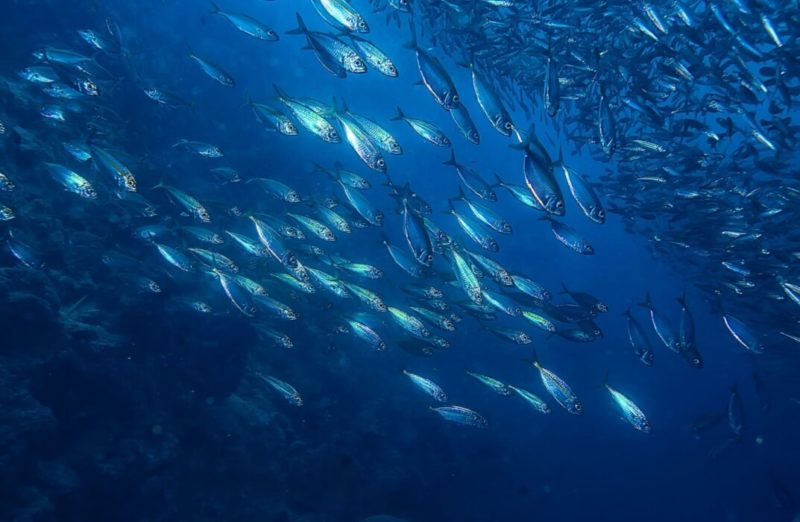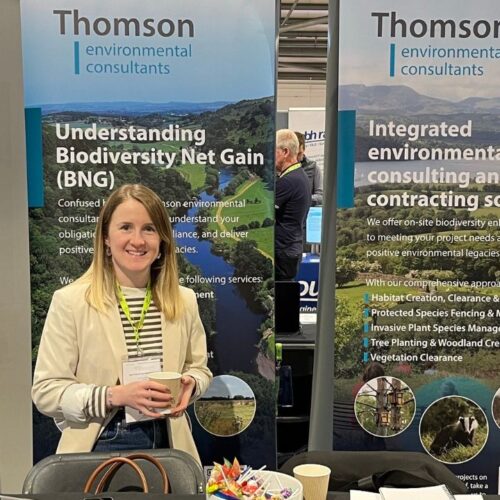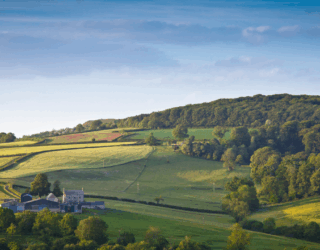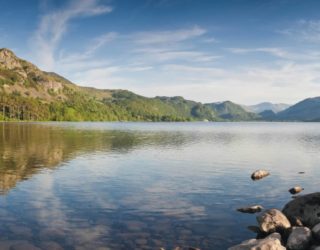As pressure mounts to tackle water pollution, meet biodiversity targets, and build climate resilience into infrastructure, the importance of blue infrastructure and the need to protect freshwater have never been clearer. Yet water remains underrepresented in many planning and development strategies.
At Thomson Environmental Consultants, we support clients across the planning process with ecological advice that protects freshwater ecosystems while ensuring compliance with evolving UK regulations.
Here’s what developers, planners and infrastructure providers need to know:
What Is Blue Infrastructure?
Blue infrastructure refers to the freshwater elements of a development, including rivers, streams, ponds, wetlands, drainage systems and floodplains, and how they’re managed. It’s more than just engineered drainage, it involves integrating natural water processes into site design to deliver environmental, social and economic benefits.
Blue infrastructure can:
- Mitigate flood risk by slowing and storing stormwater
- Improve water quality by filtering out pollutants
- Support biodiversity through habitat creation and connectivity
- Enhance climate resilience by reducing the impact of extreme weather
- Recharge groundwater and support hydrological balance
How poor water management harms freshwater ecosystems
Failing to manage water on-site puts development projects and local ecosystems at risk. Increased surface runoff from impermeable surfaces, such as roads and roofs, often carries pollutants directly into rivers. These can include:
- Oils, heavy metals, plastics, and hydrocarbons from roads and car parks
- Nutrients like nitrogen and phosphorus, which fuel algal blooms
- Sediment that smothers riverbeds and disrupts aquatic life
Misconnections and poorly designed drainage systems may also allow untreated domestic waste to enter surface water networks, especially during storm events. This increases nutrient loading, reduces oxygen levels, and leads to biodiversity loss.
Freshwater habitats and species under threat
The UK’s freshwater ecosystems are globally significant and increasingly fragile. Here are just some habitats and species that are under threat in the UK:
- Chalk streams are rare and highly sensitive to nutrient pollution, sedimentation, and water abstraction. These spring-fed systems support unique ecological communities but are often degraded by siltation and physical barriers.
- Great crested newts depend on clean, connected aquatic habitats to breed. Poor drainage design and habitat fragmentation can jeopardise populations.
- Freshwater pearl mussels require clean, stable-flowing rivers. They are declining rapidly due to sewage discharge, sedimentation, and the spread of invasive species like zebra mussels.
Without ecologically sensitive planning, these and other species will continue declining, risking biodiversity and regulatory non-compliance.
How to protect fresh water in development
At Thomson, we work with developers to integrate blue infrastructure and freshwater protection into every stage of a project. This includes:
- Early ecological assessments
Site walkovers, baseline surveys and species-specific assessments help identify risks early and guide smarter design choices. These assessments also inform:
- Water Framework Directive (WFD) assessments
- Habitat Regulations Assessments (HRA)
- Flood Risk Activity Permit applications
- Nutrient Neutrality and Biodiversity Net Gain
We help clients comply with nutrient neutrality requirements in sensitive catchments by designing mitigation strategies in parallel with drainage and flood risk assessments.
To meet Biodiversity Net Gain (BNG) standards, we carry out baseline and post-development assessments using UKHab and River MoRPh surveys to calculate biodiversity units and guide design improvements.
- Designing for long-term functionality
We recommend incorporating Sustainable Drainage Systems (SuDS) such as:
- Permeable paving and green-blue roofs
- Swales and detention basins
- Wetland retention ponds that provide habitat and water quality benefits
We also support clients with long-term monitoring and management plans to ensure these systems remain effective over the lifetime of the development.
Common freshwater oversights and how to avoid them
Many of the water-related issues on development sites are avoidable with early intervention. Key pitfalls include:
- Ignoring nutrient loading, which can trigger planning objections
- Overlooking fish migration routes and habitat fragmentation
- Damaging riparian zones – vegetated buffers that stabilise banks and filter runoff
- Failing to include maintenance strategies for blue infrastructure features
The role of freshwater ecologists in planning
Freshwater ecologists play a vital role in ensuring compliance, protecting biodiversity, and improving site resilience. At Thomson, we advise throughout the project lifecycle, from initial surveys to planning support, permit applications, and ecological supervision during construction.
“Blue infrastructure isn’t just about where water goes. It’s about creating systems that allow people and ecosystems to thrive side by side,” says Emily Trill, Principal Hydrologist at Thomson.
If you’re planning a site near rivers, streams, or nutrient-sensitive catchments, blue infrastructure is no longer optional. It’s essential for protecting freshwater, achieving planning approval, and building climate-resilient, compliant developments.
Need support with blue infrastructure or freshwater ecology? Get in touch with Thomson Environmental Consultants to discuss your project.











